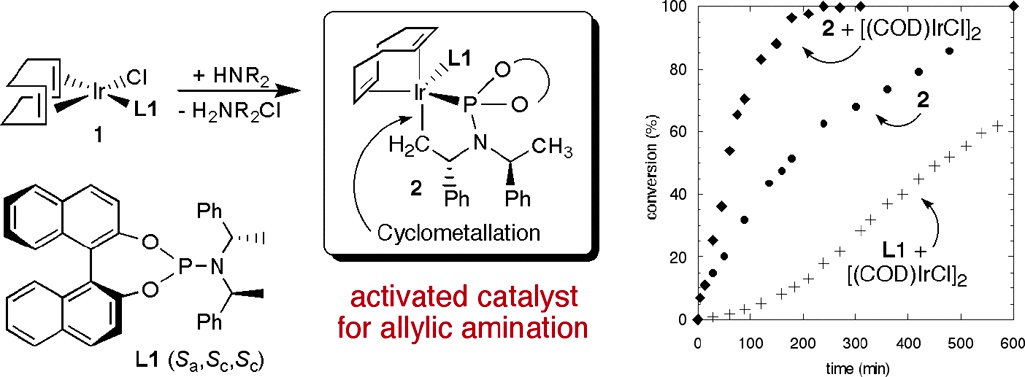Identification of an Activated Catalyst in the Iridium-Catalyzed Allylic Amination and Etherification. Increased Rates, Scope, and Selectivity
J. Am. Chem. Soc., 2003, 125 (14272 -14273)
View on publisher site
Abstract
Studies were conducted to determine possible intermediates in the highly enantioselective, iridium-catalyzed amination and etherification of allylic carbonates, and these studies revealed that cyclometalation of the phosphoramidite ligand is likely to generate the active catalyst. The square-planar [Ir(COD)(L1)Cl] (L1 = P(BINOL)(bisphenethylamine)) did not react with cinnamyl carbonate, but did react with amine to generate an Ir(I) trigonal bipyramidal complex coordinated by COD, a cyclometalated κ2-phosphoramidite, and a κ1-phosphoramidite. This complex reacted with phosphines to generate products from replacement of the κ1-phosphoramidite. These cyclometalated complexes were highly active catalysts for allylic amination and etherification and retained the high selectivity of the original catalyst system. In addition, these complexes combined with [Ir(cod)Cl]2 catalyzed reactions of amines with lower loadings, catalyzed reactions of alkylamines and aromatic amines that did not react with the original catalyst system, and catalyzed reactions of phenoxides under milder conditions.
Read on publisher's site